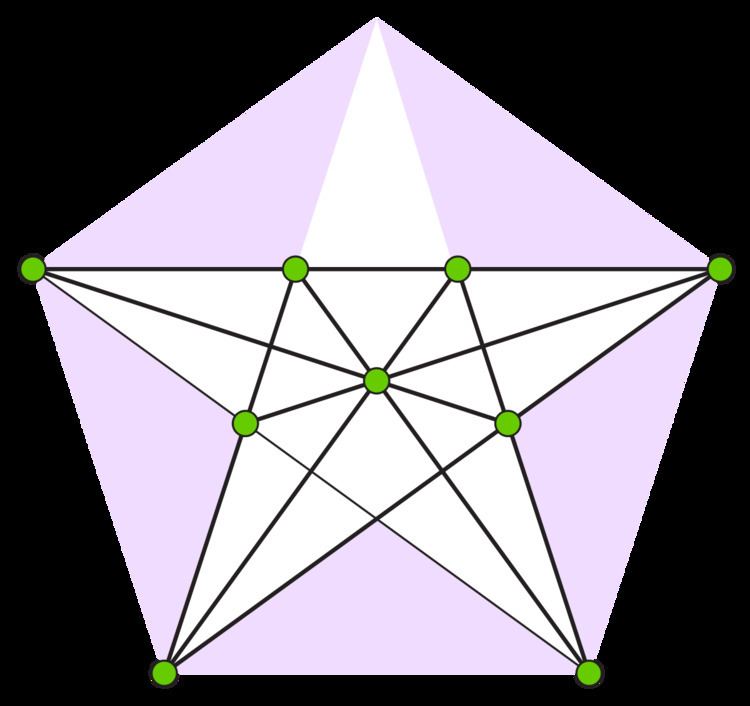 | ||
In geometry, the Perles configuration is a configuration of 9 points and 9 lines that can be realized in the Euclidean plane but for which every realization has at least one irrational number as one of its coordinates. It is not a projective configuration, however, because its points and lines do not all have the same number of incidences as each other. It was introduced by Micha Perles in the 1960s.
One way of constructing the Perles configuration is to start with a regular pentagon and its five diagonals, which form the sides of a smaller regular pentagon within the initial one. The nine points of the configuration consist of four out of the five vertices of each pentagon and the shared center of the two pentagons; the two missing pentagon vertices are chosen to be collinear with the center. The nine lines of the configuration consist of the five lines that are diagonals of the outer pentagon and sides of the inner pentagon, and the four lines that pass through the center and through corresponding pairs of vertices from the two pentagons.
Every realization of this configuration in the real projective plane is equivalent, under a projective transformation, to a realization constructed in this way from a regular pentagon. Therefore, in every realization, there are four points having the same cross-ratio as the cross-ratio of the four collinear points in the realization derived from the regular pentagon. But, these four points have
Perles used his configuration to construct an eight-dimensional convex polytope with twelve vertices that can similarly be realized with real coordinates but not with rational coordinates. Ernst Steinitz's proof of Steinitz's theorem can be used to show that every three-dimensional polytope can be realized with rational coordinates, but it is now known that there exist irrational polytopes in four dimensions.
